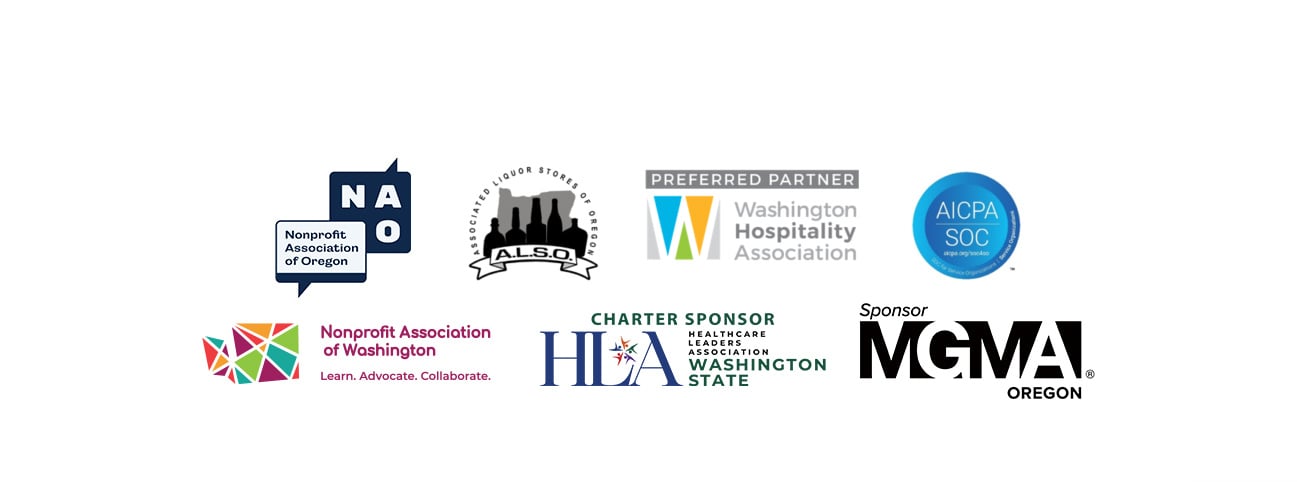Extraordinarily high heat and temperatures have been growing trend in the Pacific Northwest region of the United States. To make matters worse, wildfires and the fallout effects from them have also been impacting the region. As part of an ongoing effort to protect employees from the dangers presented by the extreme heat and wildfires, Oregon OSHA has issued three new rules/laws for employers to observe.
Oregon OHSA Emergency Rule #1:
High & Extreme Heat Rule
Adopted July 8th, 2021, the first emergency rule from Oregon OSHA strengthens the requirements for employers to protect their employees from the dangers of high and extreme heat.
The new rule will stay in effect for 180 days (until 01/04/2022) until a more permanent heat stress prevention rule can be set in place. The new rule comes in light of the fact that high heat is not going away this or any summer, according to Oregon officials.
The new rule covers topics that include:
- Regular cool down breaks
- Training
- Communication
- Emergency planning
- And more
The new rule applies to any workplace, indoor or outdoor, that has dangers due to or because of the heat.
The requirements that are set forth by the new rule are dependent on the current heat index on any particular day.
If the heat index is equal to or above 80 degrees Fahrenheit, then employers are required to give access to sufficient shade, and an adequate supply of drinking water.
If the heat index is above 90 degrees Fahrenheit, then the following additional rules apply:
- Ensure effective communication between an employee and a supervisor is maintained so that an employee can report concerns.
- Ensure that employees are observed for alertness and signs and symptoms of heat illness and monitored to determine whether medical attention is necessary.
- Provide a cool-down rest period in the shade of 10 minutes for every two hours of work. These preventative cool-down rest periods may be provided concurrently with any other meal or rest period required by policy, rule, or law.
- Develop and implement an emergency medical plan and practices to gradually adapt employees to working in the heat.
Access to Shade
If the heat index is high enough, employers must provide workers with access to shade. Shade can be provided by any natural or artificial means. It cannot expose employees to unsafe or unhealthy conditions that could deter or discourage access or use of the shade.
Shade can be either open to the air or must provide mechanical ventilation for cooling if indoors or enclosed.
Shade must also accommodate, at minimum, the number of employees that are on recovery or a rest break at any given time, so that they may sit. It should also be located as close as possible to where employees are working.
Shade present during meal periods must be large enough to accommodate the number of employees on the meal period that remain on-site, on any given day.
Drinking Water
If the heat index is high enough, employers must provide a readily accessible water supply for employees at all times, and at no cost to the employees.
The supply must be large enough for each employee to consume 32 ounces per hour, as well as between 77 and 35 degrees Fahrenheit.
Employers are allowed to use eligible substitutes if preferred. Eligible substitutes include any drinking water packaged as a consumer product, or any electrolyte-replenishing drinks, such as sports drinks. They also must not contain any caffeine. While this is allowed, it is recommended that employers do not completely replace the required water, and rather provide a combination of the two.
Employers must also ensure that employees have ample time and opportunity to drink water.
Supervisor & Employee Training
Starting this past August 1st, 2021 employers must ensure that all employees, supervisory and non-supervisory, prior to working in a heat index of equal to or more than 80 degrees, are trained in the following topics:
- The environmental and personal risk factors for heat illness, as well as the added burden of heat load on the body caused by exertion, clothing, and personal protective equipment.
- The procedures for complying with the requirements of this standard, including the employer’s responsibility to provide water, provide daily heat index information, shade, cool-down rests, and access to first aid as well as the employees’ right to exercise their rights under this standard without fear of retaliation.
- The concept, importance, and methods of adapting to working in a hot environment.
- The importance of employees immediately reporting symptoms or signs of heat illness in themselves, or in co-workers.
- The effects of non-job factors (medications, alcohol, obesity, etc.) on tolerance to workplace heat stress.
- The different types of heat-related illness, and the common signs and symptoms of heat-related illness.
Extra Resources Regarding Oregon OSHA's High & Extreme Heat Rule
Emergency Rule Documents found on Oregon OSHA's adopted rules page.
Temporary rules to address employee exposure to high ambient temperatures can be found here.
Oregon OHSA Emergency Rule #2:
Protecting Occupant(s) Of Employer-Provided Housing Against Heat Dangers
This new emergency rule establishes safeguards against high heat in employer-provided housing. It applies to all occupants of any housing that is provided by employers, and has been effective since August 9th, 2021, and will remain in effect for 180 days (until 02/05/2022).
The rule is part of an ongoing battle to help protect Oregon workers from extraordinary hazards that have become more extreme due to climate change.
In short, the new law requires employers to provide (in employer-provided housing) access to cooling areas and other steps to minimize dangerous heat.
Cooling Areas
Any room where employees sleep must be able to maintain an indoor temperature of 78 degrees or less.
If employers cannot provide a room of that temperature, then they must provide an area for occupants to cool off whenever the heat index outside the housing is at or above 80 degrees.
Cooling areas must be large enough to accommodate at least half of the occupants at any one time, and can be a combination of two approaches:
- Giving occupants continual access to one or more common rooms maintain at or below 78 degrees Fahrenheit (using air conditioners, evaporative coolers, air purifiers with coolers, or other reliable means).
- Giving occupants continual access to outdoor rest areas, away from work areas or activities that could cause a hazard. Rest areas must be shaded; provide water misters, cooling vests, or equally effective means of relief; and provide adequate seating.
Minimizing Heat in Housing Units
If rooms, where people sleep, are not able to maintain the proper indoor temperature of 78 degrees or less, then employers must take extra steps and precautions.
These include:
- Maximizing the ability to keep housing cool by ensuring windows can be protected from direct sunlight during all hours of the day – through the use of artificial or natural shade – including coverings to deflect radiant heat from the sun.
- Making fans available at no cost for any occupants who want to use them.
Temperature Awareness
Employers must provide a thermometer that displays the temperature in both Fahrenheit and Celsius in each housing unit.
Additional
In addition to training for employees and supervisors about the dangers of heat illness, employers must display the “Heat Risks in Housing” poster provided by Oregon OSHA so occupants can see it. Access to emergency services. Employers must ensure occupants have access to a working telephone to contact emergency services.
Oregon OSHA Emergency Rule #3:
Protecting Workers Against Wildfire Smoke
The new emergency rule puts protections in place against the hazards of wildfire smoke, a problem that has been becoming more and more frequent in recent years. It covers a variety of exposure controls, training and information, and other measures.
The new rule went into effect on August 9th, 2021, and will remain in effect for 180 days (until 02/05/2022). It applies to employers whose employees are or will be exposed to wildfire smoke where the ambient air concentration for fine particulate matter (PM2.5) is at or above an Air Quality Index (AQI) 101.
AQI 101 is very dangerous and unhealthy for sensitive groups, these include:
- People with lung and heart problems
- Children younger than 18
- Adults older than 65
- Pregnant women
- People with diabetes
Workplaces and operations that are exempt from the rule include:
- Enclosed buildings in which air is filtered by a mechanical ventilation system.
- Enclosed vehicles in which the air is filtered by a cabin air filter.
- In both instances, doors and windows must be closed whenever possible.
To help employers, Oregon OSHA is coordinating with several partners on the distribution of respirators. That coordination includes working with the Oregon Department of Agriculture, the Oregon Home Builders Association, the Associated General Contractors Oregon Columbia Chapter, and Hoffman Construction.
Information & Training
Effective since August 16th, 2021, the new rule requires employers to ensure that employees who may be exposed to AQI 101 have been trained in a manner and language they understand.
Training must include the following topics:
- The potential health effects of wildfire smoke, including increased risk of health effects to sensitive groups.
- The symptoms of exposure, including burning sensations in the eyes; runny nose, sore throat, cough, and difficulty breathing; and fatigue, headache, and chest pain.
- How employees can get the current and forecasted AQI level.
- How to operate and interpret any air quality monitoring device provided by the employer.
- The employer’s methods to protect workers from wildfire smoke.
- Emergency response procedures.
- The employee’s right to report health issues and obtain medical treatment without fear of retaliation.
- Two-way communication system for wildfire smoke hazards.
- The importance, limitations, and benefits of using filtering facepiece respirators when provided by the employer, and how to properly put them on.
Communication System
Before workers are exposed to an AQI 101, employers must develop and implement a system to communicate wildfire smoke hazards.
These must include:
- Notifying employees when the worksite’s ambient air concentration is at or above AQI 101.
- Giving notification when ambient air concentration is at or above an AQI 201, which involves very unhealthy air quality with the risk of health effects increased for everyone.
- Notifying employees when the ambient air concentration is at or above an AQI 500.
- Notifying employees when the ambient air concentration drops below levels requiring protective measures.
Note:
Workers have a right to a safe and healthy workplace, including the right to be safe from the dangers of heat stress, wildfire smoke, and high heat in employer housing. They have the right to raise health and safety concerns, free from retaliation. If they do not believe their concerns are being addressed, they have a right to file a complaint with Oregon OSHA. The division does not give advance notice of inspections.
Complying with these updated laws can be tricky, that's why it can be a good move to turn to an Oregon Payroll and HR Company that you can trust, to help you.


.png)


